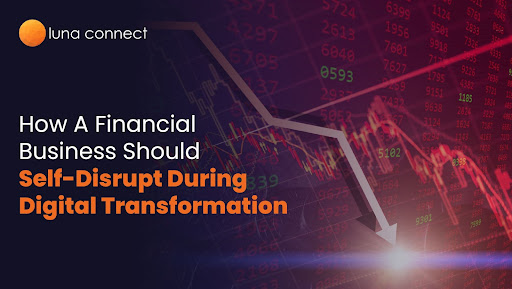Engaging in digital transformation can prove challenging but intentional disruption of your own products and services can become a winning approach to successful change if businesses determine a suitable strategy. Self-disruption occurs when a business proactively replaces one product or process with another. Forward-thinking incumbents recognise the need to self-disrupt rather than leave this move to competitors, such as Microsoft disrupting their own enterprise software products with Azure Cloud.
With the global shock caused by the Covid pandemic, digital transformations have been accelerated, with many large companies worldwide engaged in some form of digital transformation. But despite digital transformation being mainstream and proven to bring positive results, some have appeared to struggle – with many not achieving positive returns. A cause of poor returns could be that an aggressive digitisation process often means that companies will have no choice but to intentionally self-disrupt their products and services through digital innovations.
So, how can a bank, lending institution or financial business go about self-disruption to digitally transform and come out on top? Below, we discuss the three best practices for intentional self-disruption.

1. Launch radical innovations
Digitisation has brought about the development of new platforms, virtual ecosystems, and the commoditisation of deep tech such as AI. Combining technological innovation, new product offerings, business model transformation, and unique digital offerings is the leverage lenders need to keep up with customer demands.
Moreover, companies who leverage their digital transformation to develop innovative digital products and services have made the intentional self-disruption strategy especially compelling.
2. Be proactive, do not wait
There is a rise of challenger fintechs on one side, and large financial institutions like banks on the other, investing heavily in digital projects. The motivation of an intentional disruption strategy is to avoid being blindsided by competition. Therefore, proactiveness pays better than reactiveness. But, how? Businesses could consider adding several forms of first moves at once, including launching new products and innovations before the competition and embracing technologies earlier at scale than others. Sourcing and partnering with companies specialising in fintech and digital transformation that will help lenders achieve this end goal quicker.
This will provide the time advantage to best understand how contemporary digital technology may support new market possibilities and new revenue channels. Companies afraid of change will quickly prove a disadvantage as consumers will inevitably turn to the most efficient and easily-accessible lender for a digital experience on a long-term basis.
3. Go beyond natural boundaries
New products or services can improve the pay-off of digital innovation. However, a large portion of companies think about those diversifications as an extension of their current services offerings or a broader scope within the financial industry.
Entirely new products and services outside the current boundary can achieve greater payoff. Institutions should bundle their intentional disruption strategy to reach beyond initial market boundaries and leverage tapping into possible extra pool of revenues and profit.
How to win an intentional self-disruption strategy?
We have laid out three ways to play the internal disruption game. The positive news is that local banks, lenders and financial institutions may not have to play all three strategies at once to experience growth, customer satisfaction, and competitive advantage. In fact, many successful companies manage disruption to their benefit by choosing only one or two of the practices above. The outcomes may depend on your already existing customer base and current business model.
This prospect also means that the opportunity is not necessarily as limited as some corporations and other businesses may believe. And disruption may be a risk that could be neutralised in, or even used as a momentum to push many other future digital transformations.
Successful digital transformation looks different for every institution, and for those in the banking and lending sector, it is crucial to harness these shifts sooner rather than later. At Luna Connect, we can help you achieve this while preserving your original legacy, and catapulting your business into a more digitised system. If digital transformation is the shift you have been hoping to make, why not reach out and chat with one of our experts? To find out more, get in touch today.


